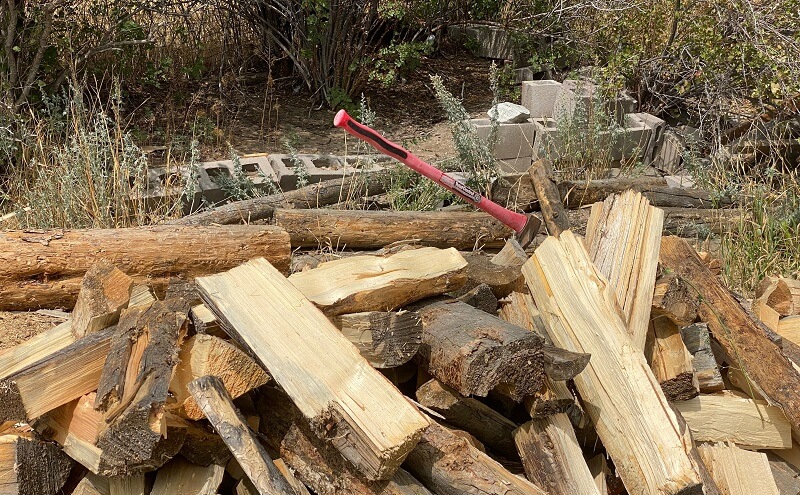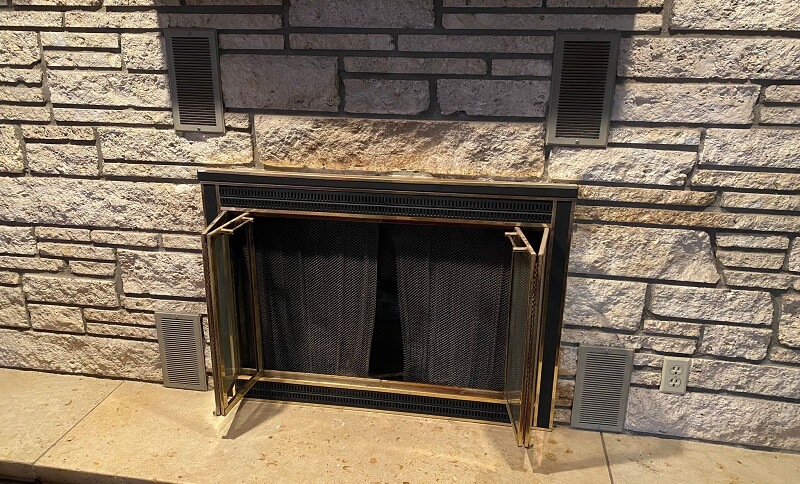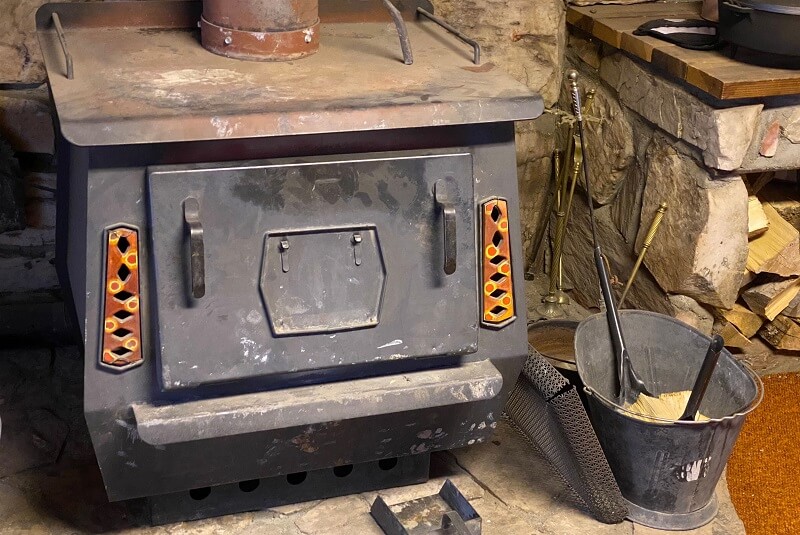Navigate This Post
“We are getting a new woodburner.” my father informed us. Woodburner was the accepted shorthand for a wood burning stove. At the time I was 15-years-old and we were living on a small farm in rural Ohio. We received our electricity from the Co-Op and our water came from a well. When it came to keeping our modest home warm all winter long, the primary fuel was firewood.
During my time on that farm I learned a lot about what it takes to keep a home heated using the bounty from the forest. With more and more people concerned with economic and societal troubles, if not all out collapse, I see and hear folks chatting about using firewood as an emergency or back-up fuel source for heating and cooking.
Recently one person posted in a chat that he had purchased a chainsaw and “if things ever get real bad, I can cut down trees for firewood.” While I appreciate the sentiment, waiting until the power grid goes down in the middle of January to go out and cut down a tree is akin to digging a water well while you are dying of thirst. There are better ways to go about it.

If you think you might need to use wood for emergency or back-up heat, the time to prepare it is now.
Green Wood es No Bueno for Your Woodburner.
Folks who have grown up in the city or suburbs might look at the great big pine tree across the street and think, “That’s a lot of firewood.” Yes, it might be a lot of firewood, next year. A green or living tree, even after it is chopped down, trimmed, and split into quarters is not going to be useful firewood until it has seasoned for about a year, maybe longer if you live in a humid environment and don’t have a woodshed.
I know all of you old hands are laughing at how obvious this sounds, but believe me. I have encountered people who think that they can just start cutting down trees and throw them into their fireplace.
Help us combat Censorship by joining our Newsletter
When we lived on our farm, we had a designated woodshed to keep the rain and snow off of the firewood and keep it dry. The floor was layered with years of dried bark and sawdust. By October of every year we would have the 8×12 building filled with logs that I had split into quarters and stacked. Every March we would pray for an early spring as the pile got smaller and smaller. Some years we had some left over, some years we did not.
Woodsheds, Storage, and Stocking up Early.
If you do not have a woodshed, get some wooden pallets to keep the firewood off of the ground and cover the piles with tarps. Safety tip: rodents like to live in wood piles and those rodents attract snakes. If you live in poisonous snake country, look before you stick your hands in the wood pile.
Cutting and splitting firewood is like buying insurance. You need to do it before you need it. No one is going to sell you an insurance policy while your house is on fire, right?. If you think you might be needing firewood next winter as a back-up, you should already have it cut and stacked to dry.

A fireplace is cozy, especially around Christmas, but they are not the best choice for home heat.
Wood Burning Stove (AKA a Woodburner) vs. Fireplace
When I was young, we lived in the city in a house that was built in the 1930’s. There was a big fireplace with a hardwood mantle in the living room. However, our primary heating source was a steam furnace powered by natural gas. A few times a year, particularly around holidays when we had company, my dad would like a cozy fire in the fireplace. I used to relish sitting in the living room by the fire.
What I learned when we moved onto our farm was that fireplaces are notoriously wasteful when it comes to both fuel and heat. There is a reason that the old mountain cabins had round, cast iron stoves in them rather than fireplaces. Woodburners are just superior.
A traditional fireplace is cozy and decorative, but most of the heat goes right up the chimney and is basically wasted. You have to burn a lot of wood to keep a house heated using just a fireplace and you have to tend the fire constantly. Nonetheless, that is better than freezing to death in the middle of a cold winter storm.
Modern, cast iron wood burning stoves, or just woodburners, are far more efficient when it comes to heating a home and they make much better use of the precious, seasoned firewood you have worked so hard to store up.
If your house does have a good working fireplace, there are wood burning stove inserts that you can install to make it far more efficient and useful. No, they are not cheap. However, think of them as a home improvement that is essentially a lifelong investment.

For back-up or off grid heat, a woodburner (wood burning stove) is a better choice.
Wood Burning Safety and You.
There is a reason why modern homes have gas or electric heat. Heating your home with wood can be a dangerous proposition. I should not have to tell you, but I will anyway, that you should have at least a 5-pound ABC fire extinguisher close at hand at all times when using wood to heat your home. A woodburner can be dangerous if left unattended.
When was the last time you cleaned your chimney? Slow or low burning fires and using improperly seasoned or green wood causes creosote to build up in the lining of your chimney. Never burn stained, finished, or painted wood in your woodburner. Too much creosote buildup can cause a chimney fire and brother, you do not want that. I remember my dad climbing up on our roof to clean the chimney. Recently, I did that same thing with a set of chimney cleaning brushes that I borrowed from the town hall. (Yes, I live in that small of a town)
Another must have is a Carbon Monoxide detector. Some CO detectors are AC with battery back up. Don’t kid yourself, you will not smell it and wake up. CO is odorless and you will just die in your sleep. We have CO detectors as well as smoke detectors on each floor of our house.
Parting Thoughts on the Woodburner.
Another reason we have modern heating systems in our homes is because wood heat is seriously labor intensive. Cutting the logs into useful sections, and splitting them into easy-to-burn quarters takes a lot of time and manpower. Even if you have a chainsaw and a hydraulic wood splitter, you’re still going to burn calories. All of the wood needs relocation from place to place, by you and any kids you might have.
When it comes to time investment, imagine that you will need to spend an hour for each one to two days worth of heat you will need during the cold winter months. If you will need to heat your house for 90 days of winter, that means 45 to 90 hours of actual physical labor at a bare minimum. Winters in the north and the mountains generally begin in November and go until April, so you do the math.
Yes, if you have helpers the job goes faster.
I am trying to help all of the new preppers and survivalists understand that wood heat is going to require more than one weekend of labor. Yes, chopping firewood warms you twice; once when you are cutting it and then again when you burn it. The irony is that when you are cutting it you generally don’t need to be warm.
Woodburners and wood heat do allow you to be more independent and less reliant on a grid or system that might fail due to storms or disasters, that is the good news. The more serious consideration is that heating your home with wood is not a spur of the moment decision that you make when the emergency has struck.
Okay, now is the time to fire up your chainsaw, sharpen your splitting maul and get to work.
Professor Paul Markel
Latest posts by Professor Paul Markel (see all)
- Tactical Rifle Tips: Transition Drills - January 5th, 2024
- 40/20/25 Shooting Drill - October 29th, 2023
- Working With Your Body Armor - October 3rd, 2023
- Hi-Point YC9: Yeet Cannon - August 14th, 2023
- Texas Hog Hunting: Day or Night w/ One Rifle - July 25th, 2023
One additional comment: When you purchase that wood burning insert for the fireplace, be sure to install a stainless steel chimney liner. It’s good insurance against a cracked flue if there were to ever be a chimney fire.. it won’t allow hot sparks to get through a broken flue and cracks in the mortar and into the wood of the house. ????